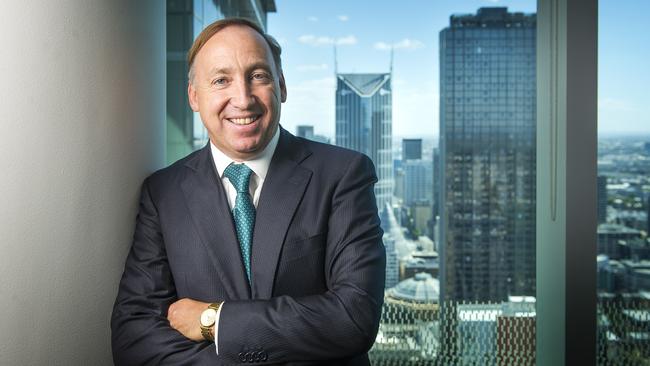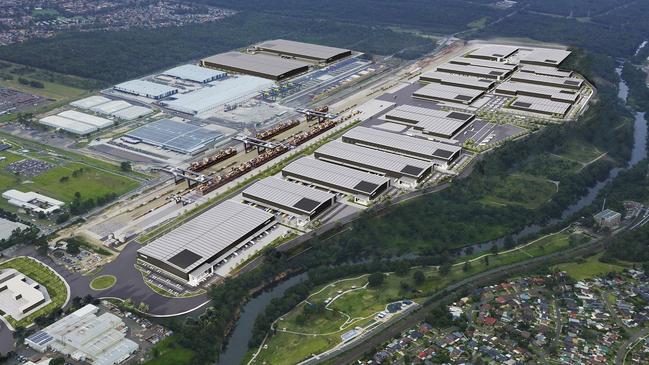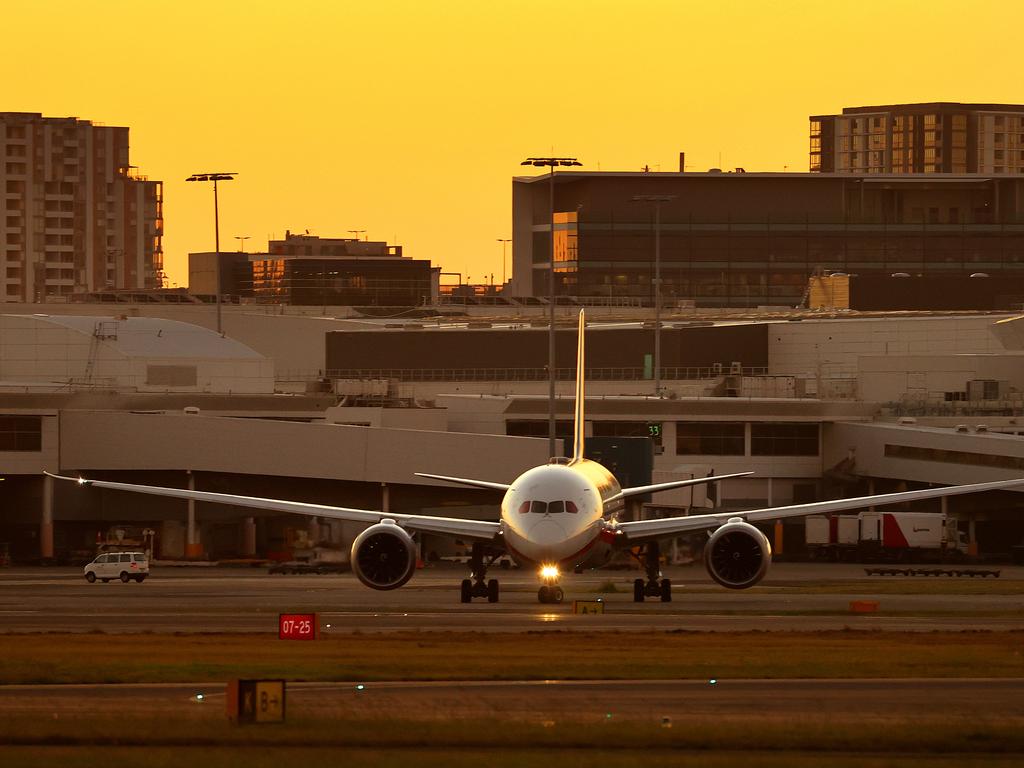
AussieSuper has surged past the retail funds such as AMP and is now becoming one of the juggernauts of the Australian financial system with plans to hit $500bn in the next five years.
The fund has become a major player in the Australian share and property markets and a significant investor in Australian infrastructure.
The $800bn industry super fund sector has long overtaken the retail super sector and has become one of the major players in financial and investment markets with AustralianSuper leading the way.
Announcing a record 20 per cent plus returns on its balanced fund on Monday, AustralianSuper’s chief investment officer and deputy CEO Mark Delaney revealed that the fund had net cash inflows of $14bn in the past financial year, despite several billion in outflows because of the government’s early super release scheme.
This year it is expected net cash inflows of $20bn boosted by the increase in the super guarantee levy from 9.5 per cent to 10 per cent from July 1.
The release of the fund’s strongest ever annual investment performance came on the same day as the fund announced its biggest ever property investment – putting $774m into a consortium buying into the intermodal logistics park in Sydney’s Moorebank, once the brainchild of Chris Corrigan. Rail-loving Corrigan saw the potential to transform what was former commonwealth land to create a western Sydney warehouse and logistics centre bringing goods in by rail from Sydney’s Port Botany and linking them up to the interstate railway between Sydney and Melbourne.
It is an ideal long-term infrastructure investment for a super fund which already has $10bn invested in property, boosting the value of Port Botany which AustralianSuper already has a 20 per cent stake in.
Delaney confirmed AussieSuper was also planning to take up more of the NSW government’s stake in toll road company WestConnex when it sells its remaining 49 per cent stake. The fund already has 25 per cent of the 51 per cent of the infrastructure project bought when the government sold off half its holding in 2018.
Delaney talked about how AussieSuper now has the big dollars to work with infrastructure companies such as Transurban in big projects in Australia, providing it with the capital for its development and investment projects, and also in the US where it bought an interest in the Indiana toll road.

Managing 45 per cent of its assets in house, with plans to control more, gives AussieSuper the freedom to move quickly to take up corporate underwriting deals and fund raisings – which it has done to the tune of $600m in Australia over the past financial year.
Big industry funds now play a key role in the decision making of the boards of major Australian companies when it comes to the issue of climate change, the amount of women on their boards and handling issues such as Rio’s destruction of the Juukan Gorge assets in Western Australia last year which eventually resulted in the departure of the company’s chief executive, senior staff and chairman.
It was a sign of the times that on the same day industry super fund investment fund IFM, of which AustralianSuper is an investor, partnered with QSuper and a US institutional investor to bid for Sydney Airport in a deal worth $22bn – another sign of the interest of industry super funds in big-ticket infrastructure investment in Australia and overseas.
As their funds grow, the industry super funds are increasingly looking for bigger and bigger infrastructure investments which is taking them offshore with investments in the US, the UK and Europe.
The existence of cashed-up super funds was a key factor in helping Australian corporates get through the Covid panic last year.
As Australia is closing its doors to foreign investors, particularly those from China, and becoming more concerned about security aspects of infrastructure investing, industry funds such as AussieSuper and IFM have been able to step in and pump in much-needed cash.
The issue for the industry funds now is that Australia is becoming too small an investment pool, with an increasing amount of funds looking offshore for the big-ticket investments needed to give stable long-term returns.
But their rise means Australia has transformed from a capital-hungry country to one where the $3 trillion super sector is providing serious funding for deals and liquidity in sharemarkets.
Interestingly, Delaney indicated that while AussieSuper has and can look at on-market takeover deals on the ASX, it is not super keen on them.
“We might look at them,” he says. “But on-market takeovers are very hard to execute.
“You have to pay up. People want a premium.”
In short, why get into a bidding war and overpay when there are plenty of other big-ticket private deals which can be done with a big cheque book to produce more long-term value?
Unlike private-equity players, super funds have to look for long-term returns and do not have the interest or the appetite for short-term slash and burn corporate turnarounds.
The Australian capital market has been transformed by the compulsory super system and the rise of industry funds creating a new source of private capital.
With more mergers on the cards the sector will be dominated by an increasing number of $50bn and $100bn-plus funds.
AussieSuper alone has a $20bn chequebook to invest over the next financial year, about half of which could be expected to be invested in Australia. When it comes to big investment deals of the future and industry funds, it is very much a case of watch this space.








Its hard to believe that Australia’s largest super fund, the $225bn AustralianSuper, was formed only 15 years ago when two smaller funds came together with combined assets of $21bn.